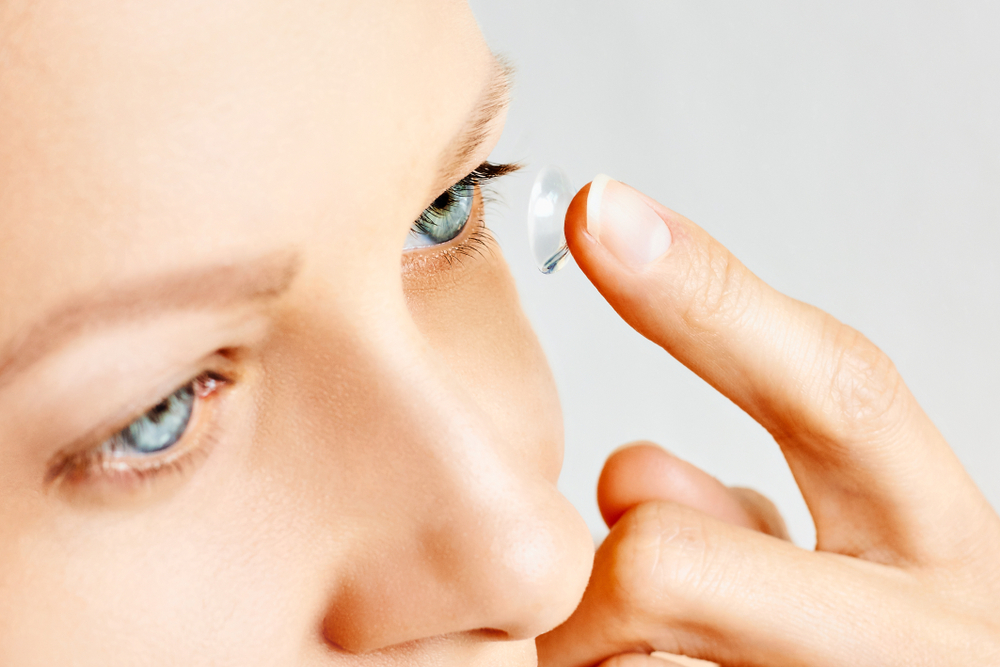
Contact lenses are a very popular choice for patients who need to use prescription eyewear, but who don’t want the inconvenience and hassle of wearing glasses all the time. Some people opt to only use contact lenses, while others rely on a combination of glasses and contacts, swapping between the two as and when they want or need to. However, regardless of whether you wear contact lenses full time or not, you will still need a separate contact lens exam and fitting appointment. You’ll also need to find out about the best way to take care of your contacts and your eyes themselves in order to keep them healthy.
Contact Lens Exam
A contact lens exam is a little different from a regular eye exam. The reason for this is that contact lenses are worn on the surface of the eyes, rather than a few centimeters in front of them. This means that your prescription for contact lenses won’t be the same as your glasses prescription. In addition to the eye health checks that are performed in a normal comprehensive eye exam, you will also need to have several tests that will help ensure you get the best contacts for you.
Many people are surprised to learn that there are dozens of different types of contact lenses. Since contacts sit directly on the eyes, your provider will need to make sure that you select the right variety, taking into account:
The shape, size, and thickness of your cornea
Whether you suffer from any eye diseases or corneal abnormalities which could affect what contacts you can wear, e.g. dry eyes or keratoconus
Your prescription requirements
Some of the tests you can expect to have during your contact lens exam will include:
Corneal topography assessment. This is a painless, non-invasive test that is used to assess the shape and size of your cornea, and this will help your eye doctor to recommend the most suitable contact lenses. It will be done using either a handheld instrument called a keratometer or using a scanner which creates a 3d impression of the surface of your eyes.
Measurement of the size of your pupils. This is needed to make sure that the contact lenses will sit in the center of your eyes. Again, this is non-invasive, painless, and straightforward, with a device called a slit lamp usually being used to take the measurement.
Evaluation of tear film. For contact lenses to sit comfortably, they need to float on a thin layer of the tear film. Your eye doctor will want to make sure you have enough tear film for this to happen. Tear film evaluation is usually performed using tiny strips of paper placed onto the lower eyelids and these collect tear film, showing how much your eyes are producing.
Contact Lens Fitting
For your contact lenses to be effective and comfortable they will need to fit perfectly. For this reason, contact lens fitting is a crucial element of your contact lens exam appointment. Once your eye doctor has determined which lenses are likely to be the most suitable, you will be given one to try. Obviously, this won’t have your prescription, but they will be able to check how they fit, and you will be able to tell them if you find them comfortable to wear. If you and your eye doctor are happy with everything, your prescription lenses will then be ordered.
Caring for Your Contact Lenses at Home
When you collect your prescription lenses, your eye doctor will give you specific advice as to the best way of handling and caring for your contact lenses and eyes at home. Proper lens care is essential for your eye health, and failure to follow these instructions could put you at risk of infection and a range of other problems. Here are just some of the recommendations that your eye doctor will probably recommend:
Make sure that you wash, rinse, and dry your hands thoroughly before you handle your contact lenses.
Be careful to use soap that is free from oils, perfumes, and other potential irritants.
When you dry your hands, use a lint-free towel.
Always use your fingers to handle your lenses, never an implement like tweezers as these could damage your lenses.
Don’t ever sleep in contact lenses unless specifically instructed to do so.
Never put a damaged contact lens in your eyes.
Replace your contact lenses as directed.
If you aren’t using disposables, make sure you follow the cleaning instructions provided to you by your eye doctor.
Don’t take any shortcuts when it comes to cleaning your lenses.
If your eyes become red, irritated or your vision changes, remove your contact lenses immediately and speak to your eye doctor.
For more contact lens aftercare support, don’t hesitate to speak to our experienced team in Seattle, WA.
- Monday9 AM - 5 PM
- Tuesday9 AM - 5 PM
- Wednesday9 AM - 5 PM
- Thursday9 AM - 5 PM
- Friday9 AM - 5 PM
- SaturdayClosed
- SundayClosed
Closed for lunch from 1-2pm




